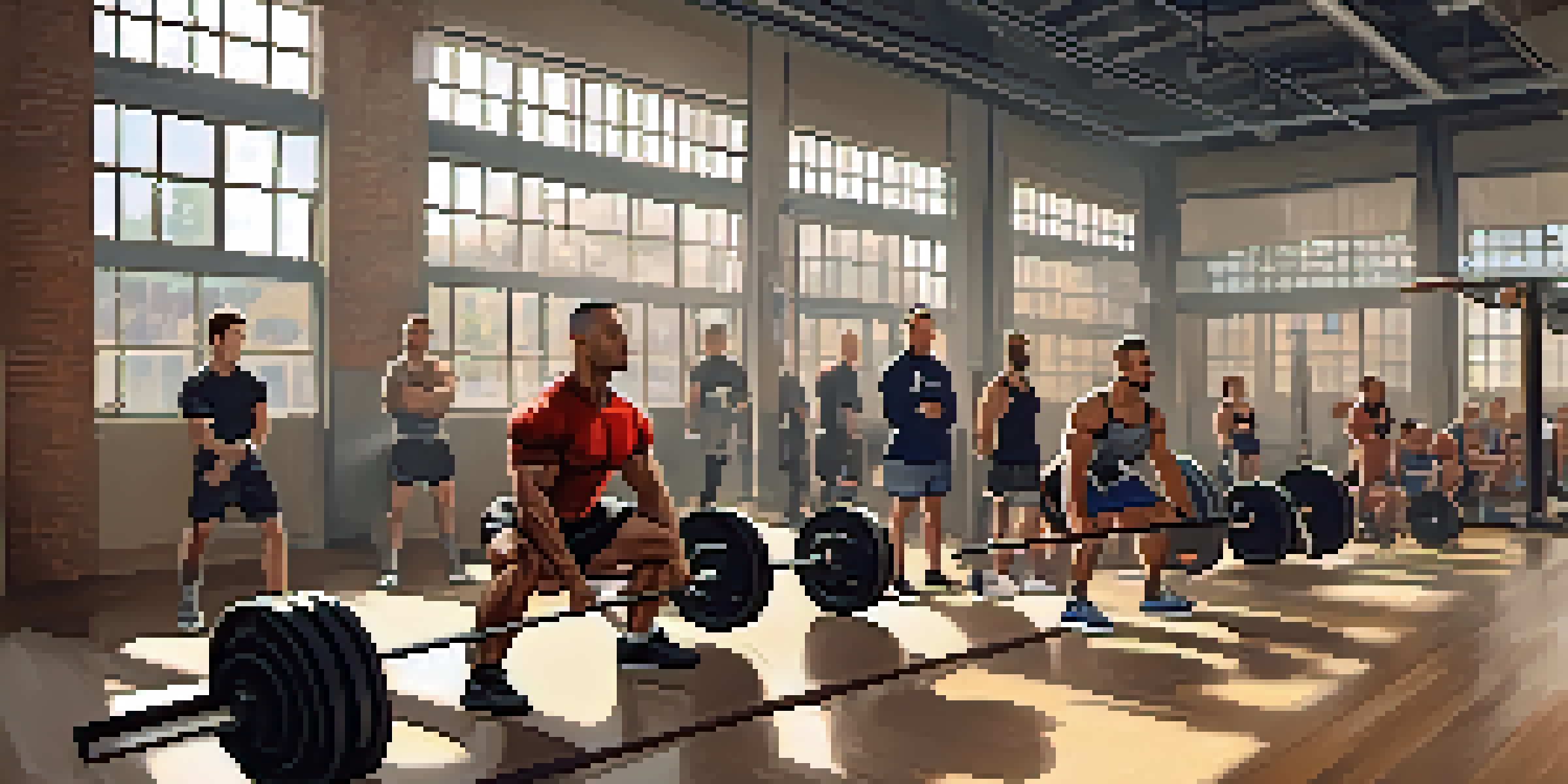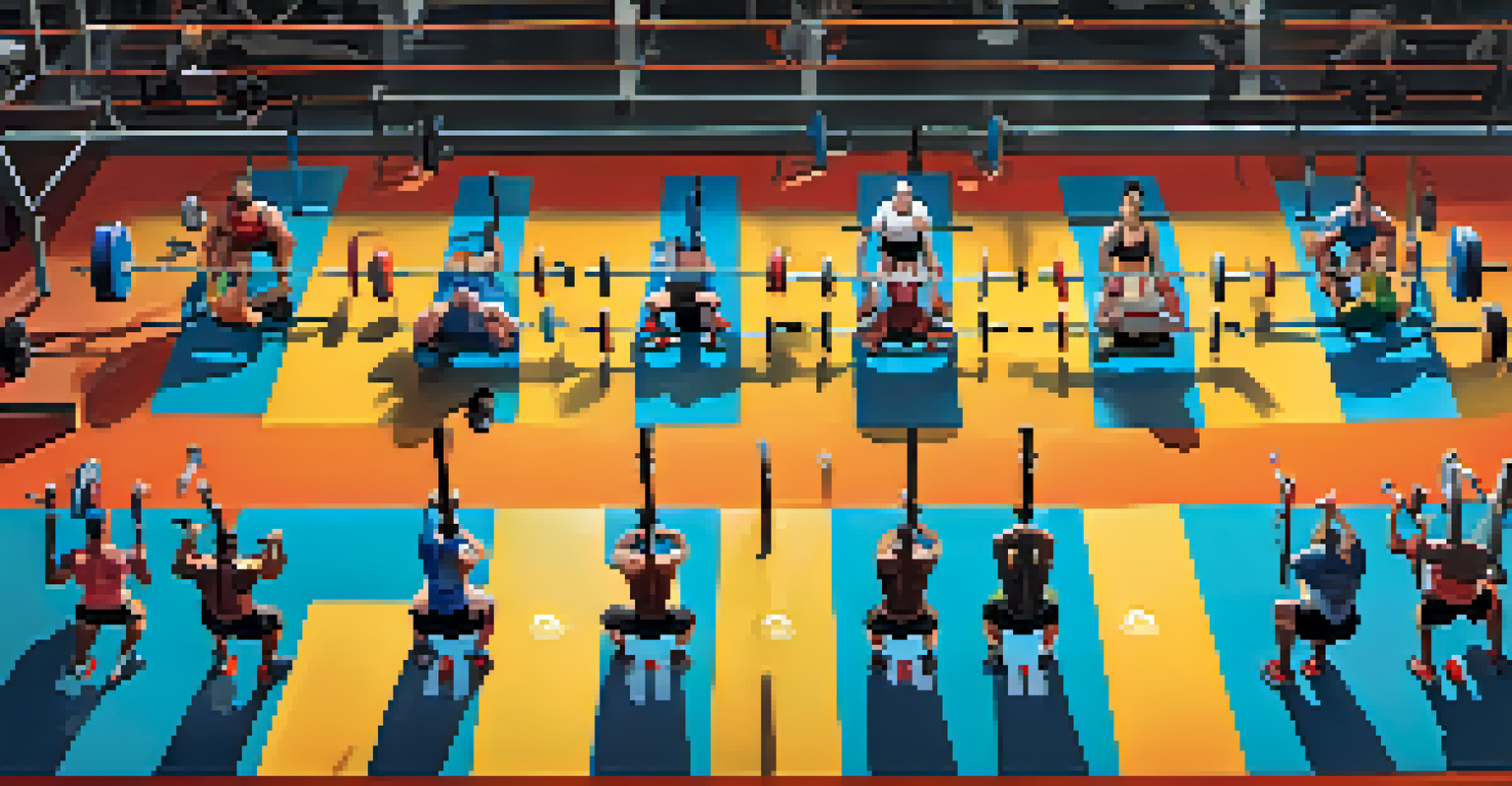Introduction to Powerlifting: A Beginner's Roadmap

What is Powerlifting and Its Core Lifts?
Powerlifting is a strength sport that focuses on three main lifts: the squat, bench press, and deadlift. These lifts are designed to test your maximal strength and technique. Each lift has its own unique requirements, making powerlifting a comprehensive way to build overall strength.
Strength does not come from physical capacity. It comes from an indomitable will.
The squat requires you to lower your body using your legs, while the bench press involves lifting a barbell from your chest. The deadlift, on the other hand, is all about lifting a barbell from the ground to hip level. Together, these lifts create a well-rounded strength training regimen.
Understanding these core lifts is essential as they form the foundation of powerlifting. Whether you're looking to compete or simply improve your strength, mastering these techniques will be your first step.
Getting Started: Essential Gear for Beginners
Before you hit the gym, it's important to have the right gear. At the very least, you'll need a good pair of weightlifting shoes that provide stability and grip. A proper lifting belt can also be beneficial, as it supports your core during heavy lifts.

Additionally, consider investing in wrist wraps and knee sleeves. These accessories can help protect your joints and improve your performance by providing extra support. While you don’t need to go overboard on gear, having the essentials can enhance your lifting experience.
Core Lifts Define Powerlifting
Powerlifting centers around three main lifts: the squat, bench press, and deadlift, which are essential for building overall strength.
Remember, while gear can be helpful, your technique and consistency are what truly matter. Start with the basics and gradually upgrade your equipment as you progress in your powerlifting journey.
Developing a Beginner Powerlifting Program
Creating a powerlifting program involves focusing on the three lifts while ensuring balanced development. A common approach is to dedicate specific days to each lift, allowing you to concentrate on form and strength. For instance, you might squat on Mondays, bench press on Wednesdays, and deadlift on Fridays.
The only bad workout is the one that didn't happen.
Incorporating accessory exercises can also enhance your strength. Movements like lunges, rows, and overhead presses help build the muscle groups that support your main lifts. This balanced approach allows for overall growth and minimizes the risk of injury.
As a beginner, aim for 3 to 4 training sessions per week, adjusting the volume and intensity according to your fitness level. Consistency is key; sticking to your program will yield the best results over time.
Understanding Proper Technique and Form
Proper technique is crucial in powerlifting to maximize strength and minimize injury. Each lift has specific form cues that you'll want to master. For example, in the squat, keep your chest up, push your knees out, and drive through your heels as you descend.
It’s often helpful to work with a coach or experienced lifter who can provide feedback on your form. Recording yourself can also be beneficial, as it allows you to visually assess your technique and make necessary adjustments.
Gear Enhances Your Lifting Experience
Having the right gear, like weightlifting shoes and a lifting belt, can improve your performance, but technique remains the top priority.
Practicing proper form will not only improve your performance but also ensure that you lift safely. Remember, it’s better to lift lighter weights with good form than to risk injury lifting heavier improperly.
Nutrition: Fueling Your Powerlifting Journey
Nutrition plays a vital role in your powerlifting success. To support your training, focus on a balanced diet rich in protein, healthy fats, and carbohydrates. Protein is especially important for muscle repair and growth, so aim for sources like chicken, fish, and legumes.
Hydration is equally crucial. Drinking enough water throughout the day helps maintain performance levels and supports recovery. Consider tracking your food intake to ensure you're meeting your nutritional needs.
Lastly, don’t overlook the importance of meal timing. Eating a mix of carbs and protein before and after your workouts can enhance your energy levels and recovery. Proper nutrition will help you fuel your lifts and reach your powerlifting goals.
Rest and Recovery: Key to Progress
In the world of powerlifting, rest and recovery are just as important as training. Your muscles need time to repair and grow stronger after intense workouts. Aim for at least one to two rest days each week to allow your body to recover.
Incorporating active recovery days, where you engage in light activities like walking or yoga, can also be beneficial. These activities promote blood flow and help reduce muscle soreness without putting too much strain on your body.
Recovery is Crucial for Progress
Rest and recovery are vital components of powerlifting, as they allow your muscles to repair and grow stronger after intense workouts.
Additionally, prioritize sleep as it’s crucial for recovery. Aim for 7-9 hours of quality sleep each night to ensure your body is fully ready for the next training session. Remember, progress in powerlifting is not just about how hard you train but also how well you recover.
Setting Realistic Goals in Powerlifting
Setting realistic and achievable goals is essential for staying motivated in your powerlifting journey. Start by establishing short-term goals, such as improving your technique or increasing your lifting weight gradually. These smaller milestones will keep you engaged and motivated.
Long-term goals, like competing in a powerlifting meet or hitting a specific total in all three lifts, can also provide direction. However, be flexible with your goals, as progress may take time and can vary based on individual circumstances.

Tracking your progress, whether through a training journal or an app, can reinforce your commitment and help you celebrate small victories along the way. Remember, the journey of powerlifting is just as important as the destination.